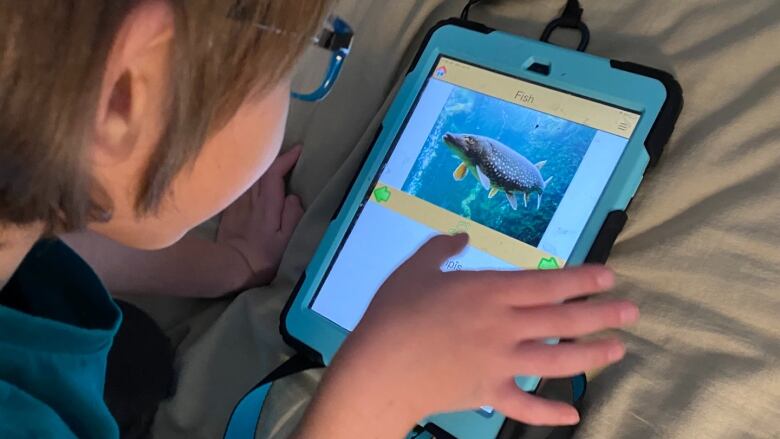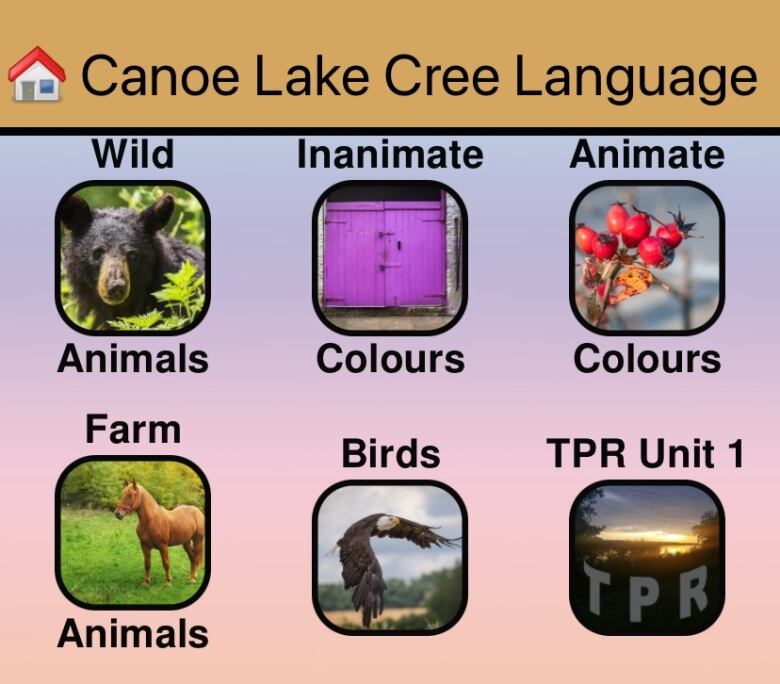Meadow Lake Tribal Council releases Cree and Dene language apps
Gwen Cubbon says it was needed in the communities and can be customized for regional dialects

Two phone apps are helpingspark Cree and Dene language revitalization in Meadow Lake Tribal Council (MLTC) First Nations.
Slated for release by the end of January, the apps are part of an MLTC initiative targeted at residents of Clearwater River Dene Nation (CRDN) and Canoe Lake Cree First Nation. More versions of the app will be developed for local language variants in MLTC's remaining communities by June, a news release said.
"Something like this was needed in our communities," said Abby Janvier, who led the Dene project with residents of CRDN and La Loche.
The app teaches its users basic vocabulary tailored to their communities, Janvier said. Her community's app features words and phrases under 22 categories that include animals, clothing and common phrases.

A typical entry also includes a photo, an English version of the word or phrase and an audio pronunciation in Cree or Dene. Janvier saidthe recorded component helps to communicate unique sounds that aren't shared with English.
"Because our language is taught orally traditionally ... it's hard to teach it just with the written piece of it," she said.
The applications use LifeSpark App Builder a tool that developer Kevin Waddell saidhas its origins in Cumberland House in the early 2000s. Waddell was working as a computer teacher at the time and noticed many students couldn't speak their language.
"That bothered me. I wanted to use my skills to help them learn their language again," he said.

Waddelldeveloped the technology as a phone app that wouldallowother communities to use the tool for their own language needs.
The app is primarily geared toward Indigenous peoples, Waddell said, buthas received interest from other groups in Africa and Australia looking to revitalize their languages. Roughly two decades since he began, Waddell said he's pleased to see his work reach students like the ones he worked with in Cumberland House.
There are plans for local versions of the app in English River First Nation, Buffalo River Dene Nation, Birch Narrows Dene Nation, Flying Dust First Nation, Waterhen Lake First Nation, Makwa Sahgaiehcan First Nation and Ministikwan Lake Cree Nation.

That's encouraging for Gwen Cubbon, who oversaw the Cree project. She's excited the community's unique blend of Michif, Cree, French and English is represented in the app and that other communities will have the same opportunity.
"It's a sense of pride that it's our own," Cubbon said.
The Local Journalism Initiative supports the creation of original civic journalism that is relevant to the diverse needs of underserved communities across Canada, broadening availability and consumption of local and regional news on matters of civic governance. Read more aboutThe Local Journalism Initiative here.If you have any questions about the Local Journalism Initiative program, please contactlji@newsmediacanada.ca.












_(720p).jpg)


 OFFICIAL HD MUSIC VIDEO.jpg)
.jpg)



























































































